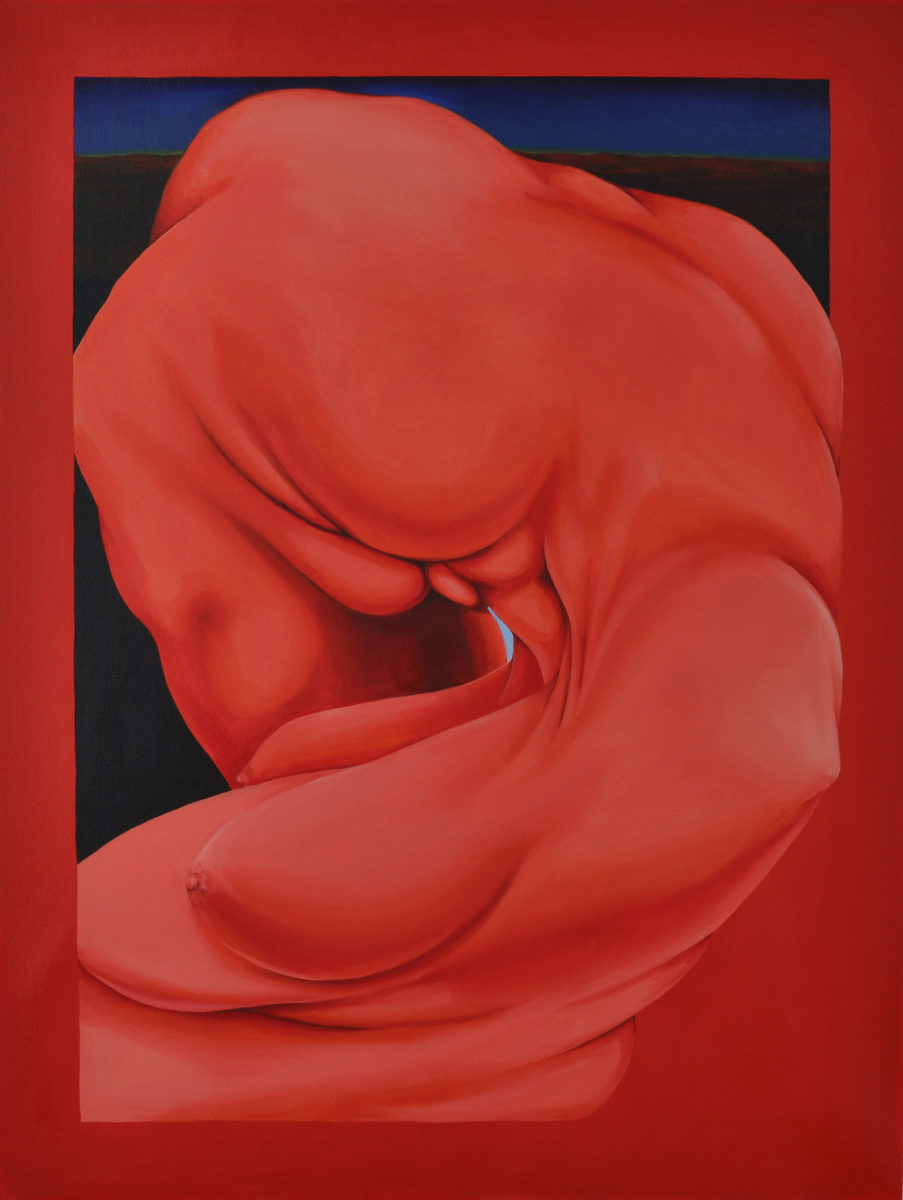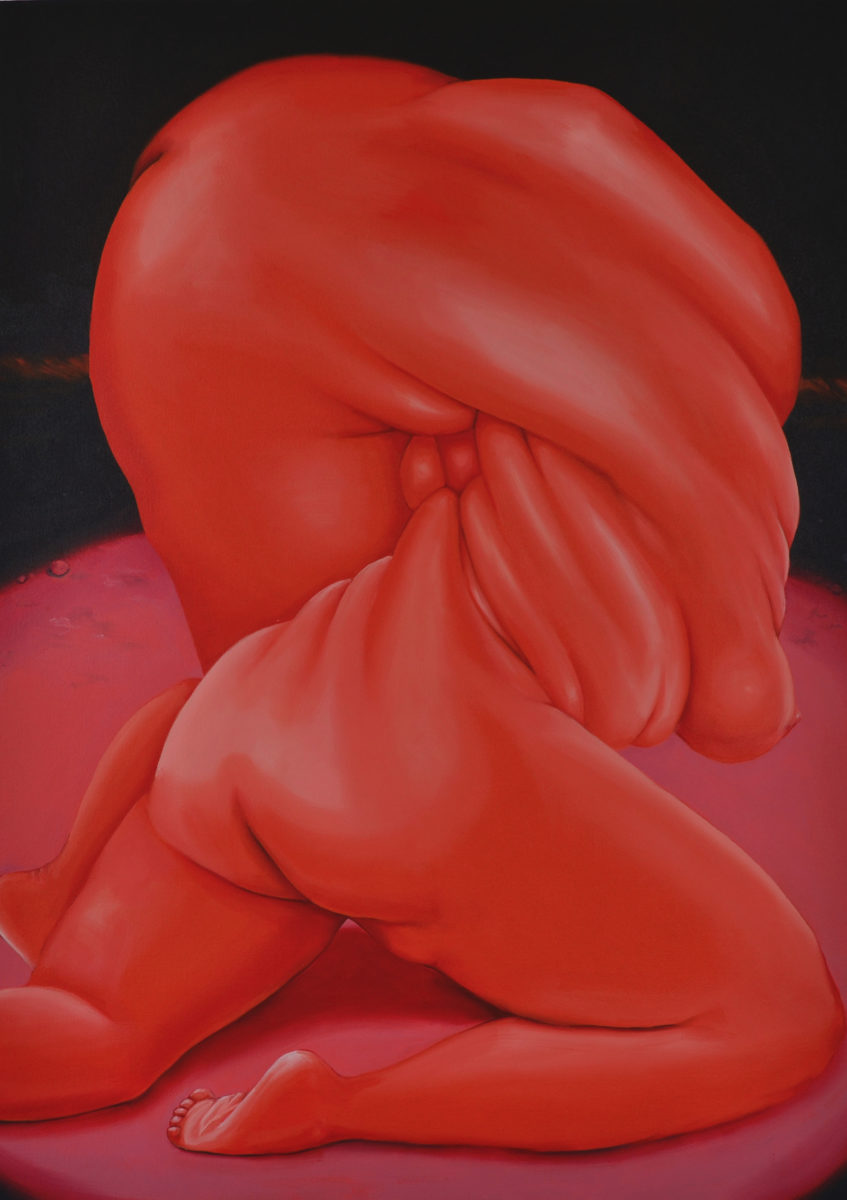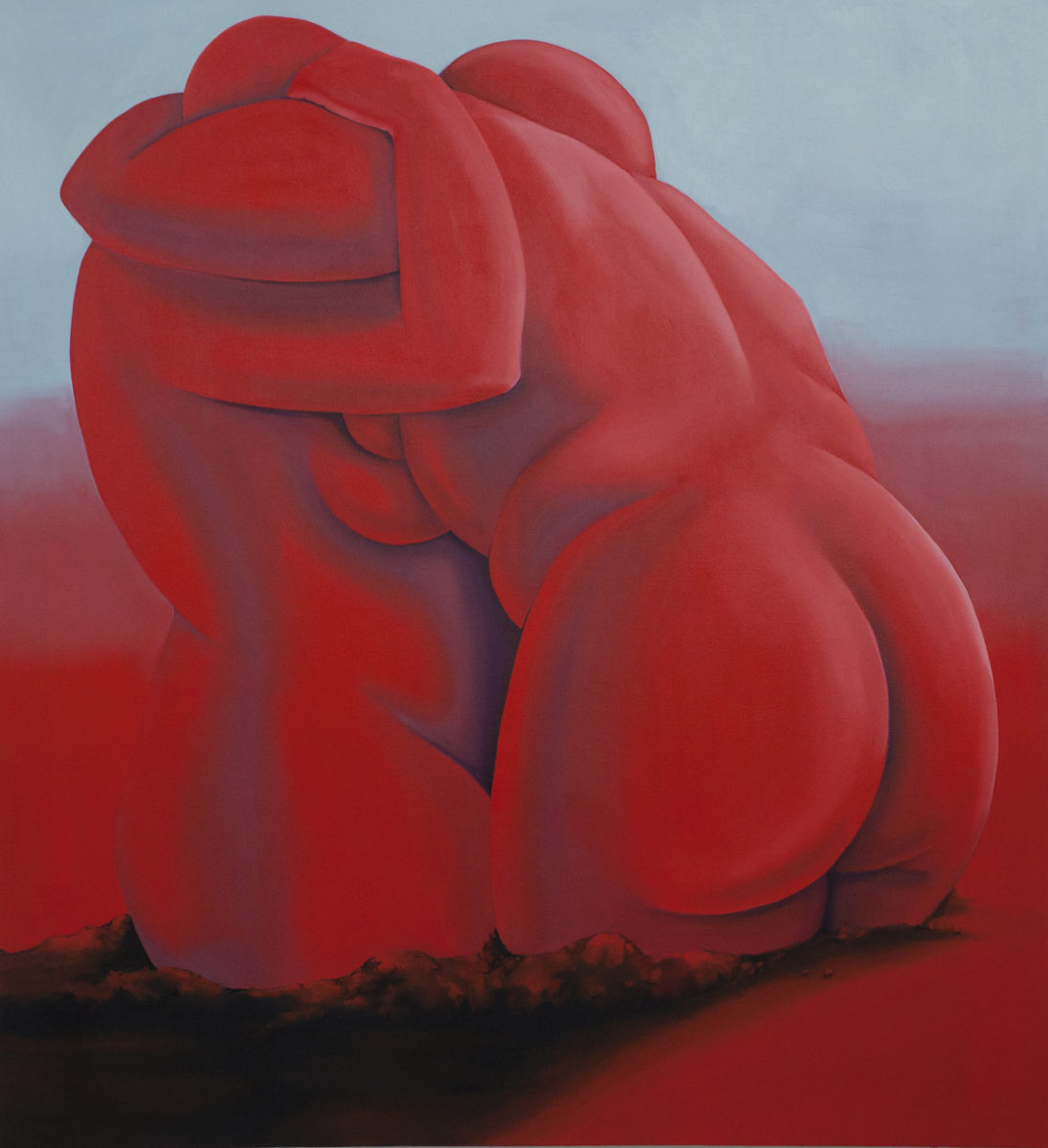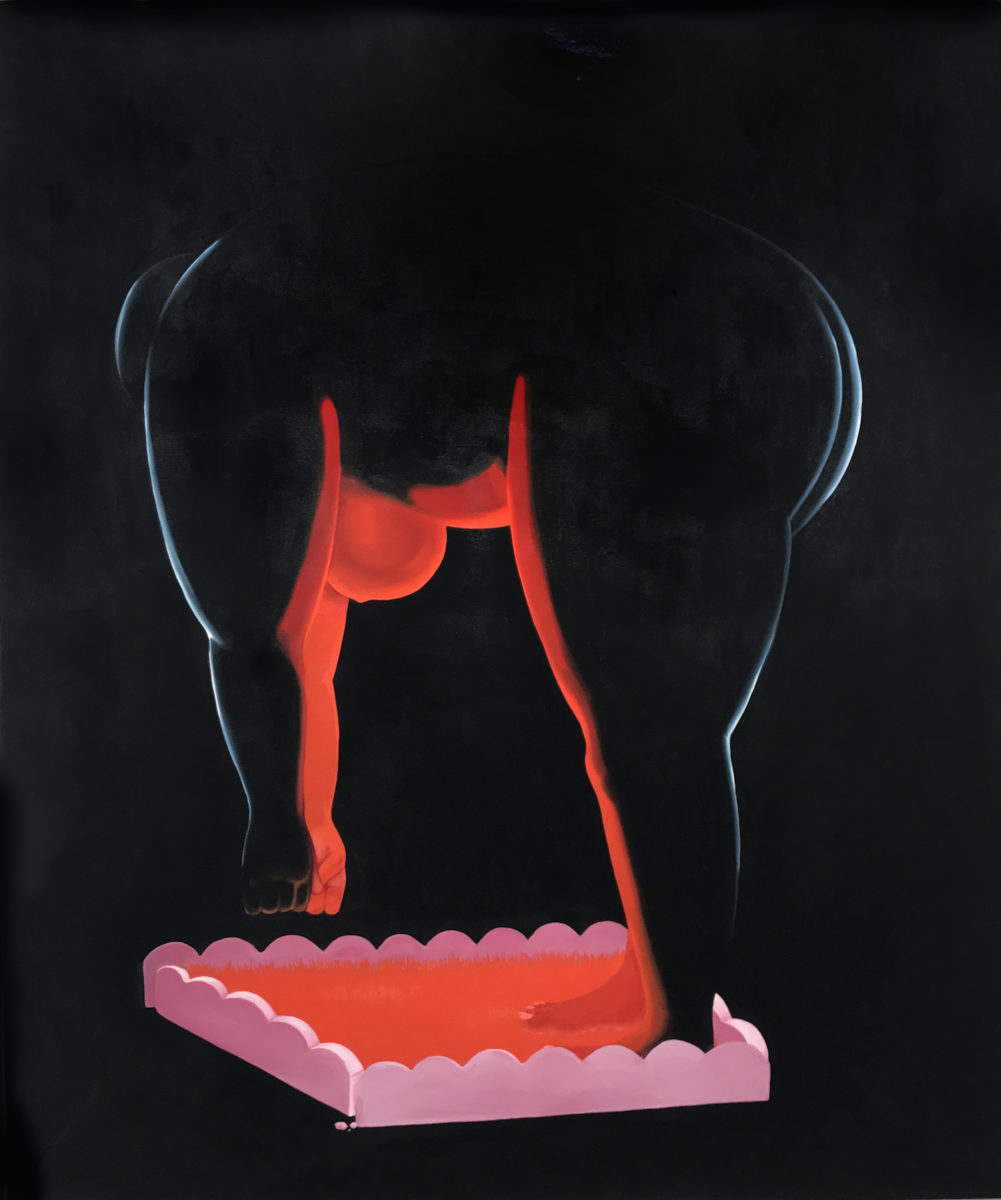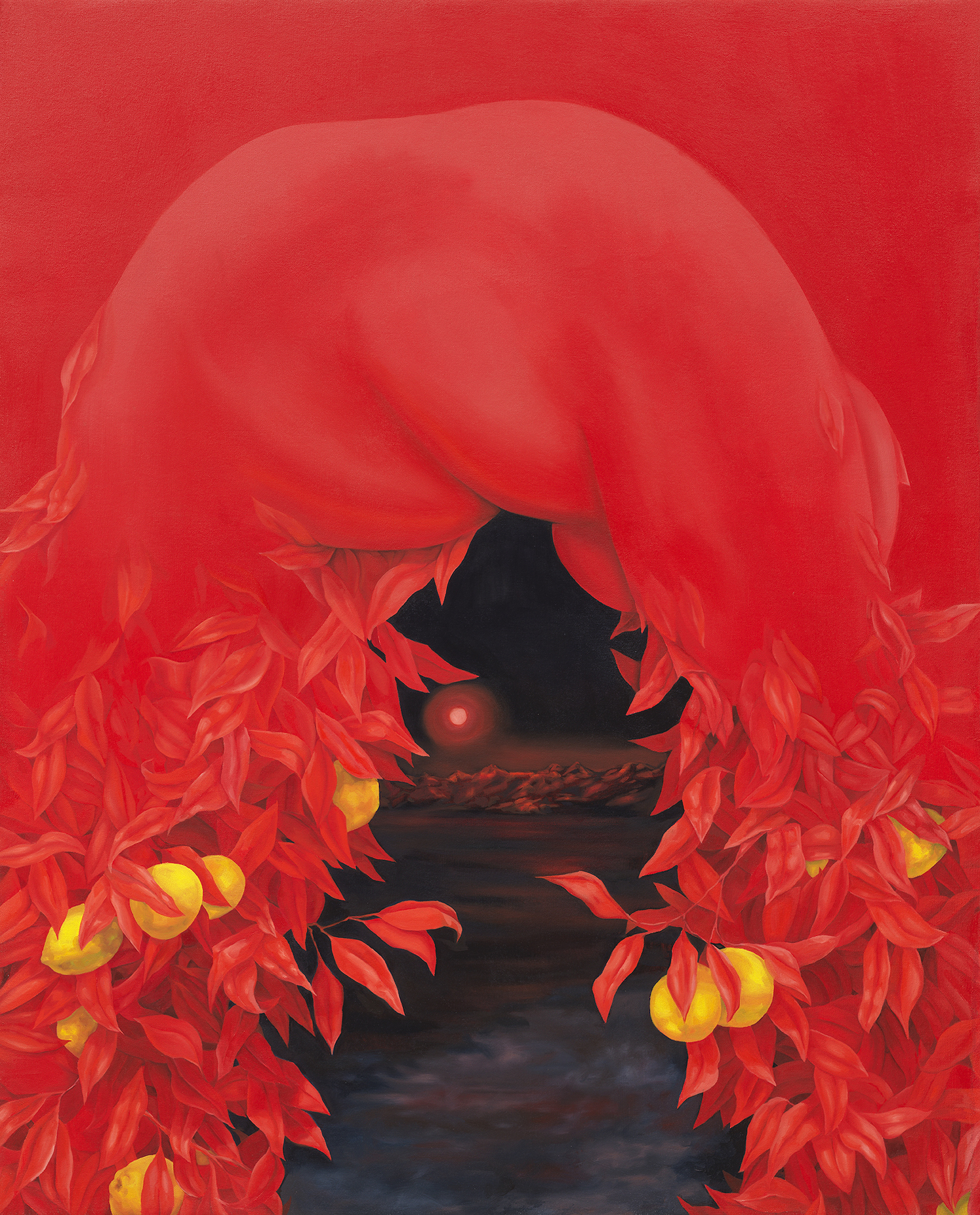
“It feels good. But I’ve been doing it for so long that it just is. We don’t really think about the fact that we’re breathing, we just breathe, and I know that sounds so corny, but in many ways I like this idea where it’s just like a daily task,” says Chicago-based artist Brittney Leeanne Williams.
Williams is one of those artists for whom creating is as much a part of her life as eating breakfast or doing laundry. Art has been her “thing” since she was a kid, and her mother guided her towards the arts after she was diagnosed with dyslexia. “I remember taking it really hard, and my mother had a really strong understanding of who I was and how broken I was about this diagnosis,” Williams says. “So she started looking for other ways to help me identify with some gifts in myself.”
Her first emotional experience with a piece of art was at the Norton Simon Museum in Pasadena, Los Angeles, where free art nights were held. “I remember one of the times we went, I saw a Monet within their collection. It was this moment of intense activation for me because looking at Impressionism as a mode of painting was a completely new idea,” explains the artist. “That art didn’t have to be about replication, but rather about expressing a feeling, that was exciting to me.”
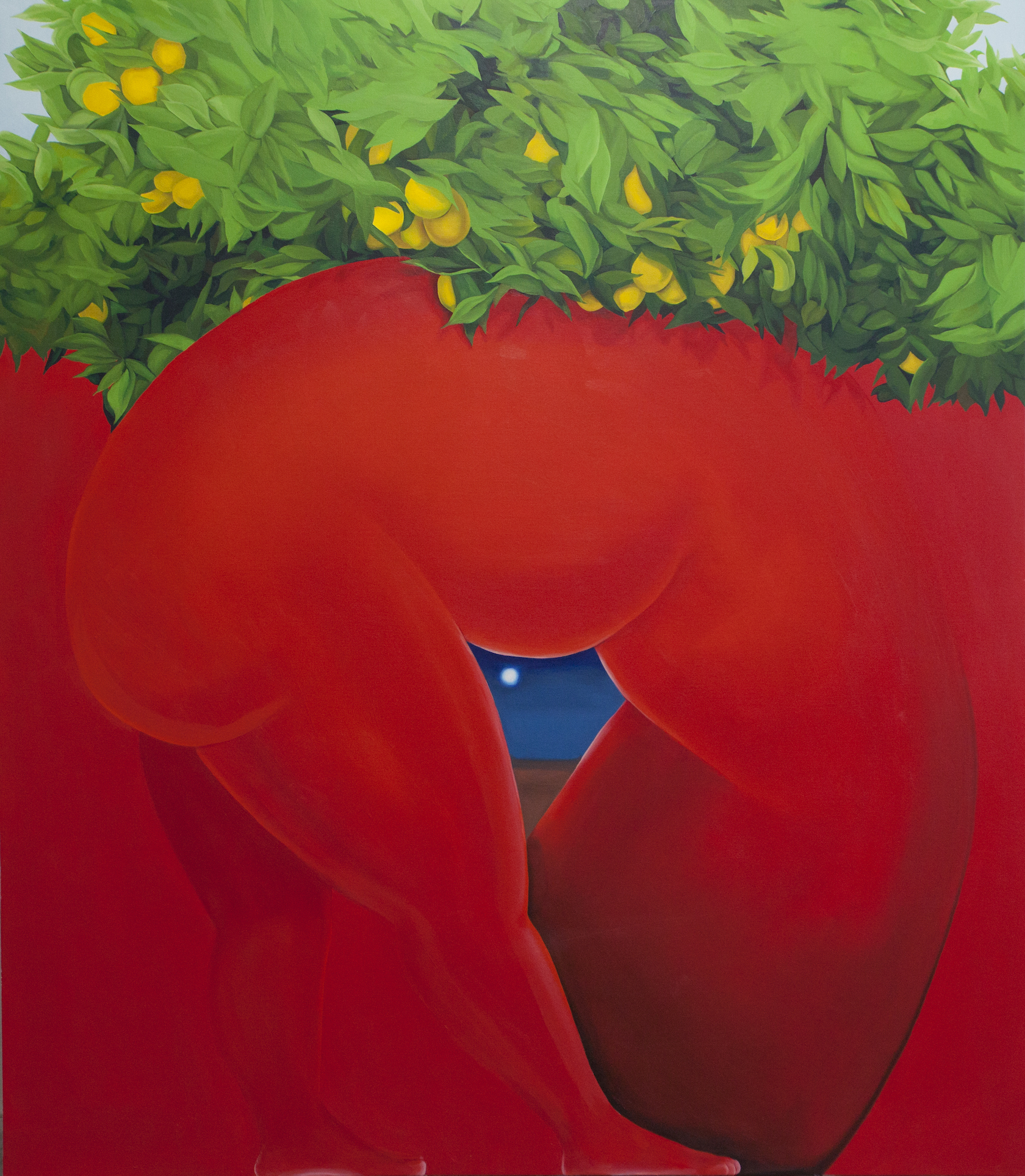
This idea of art as an expression of feeling is one Williams took to heart, and while her works feature solid, recognisable forms, she’s become known for her deeply emotive and expressive works that burst with vivid colour. Painting is the medium which allows the artist to achieve these rich hues and purposeful strokes, and again it’s about doing what feels good. “I don’t know if it’s the most efficient way of working, especially when I’m thinking of the ideas or the complexities I want to find in the painting, but it’s the most pleasurable, so that’s why I paint,” she says.
“I think there’s something about this bent back that is really insightful around the woman’s experience”
The main identifier of the artist’s works are her large, red, womanly figures that are present in each painting. It was a motif she developed while at a residency in Skowhegan School of Painting and Sculpture in Maine back in 2017. “I got really distracted by making these paintings of this figure that was kind of in a bent over, tired, exhausted, burdened state,” explains Williams. “The body became more and more developed during this time in the residency, and by the time I’d returned to Chicago, three-and-a-half months later, this female form kind of contorted and became red.”
The specific red Williams uses is cadmium red, a warm-toned red that looks almost hot to the touch. “I think the reason the body became red was from being back in the city where there were ambulance sirens,” says the artist. “This red, pulsing light had the ability to choreograph the pace of a street. It could get people to stop, this red siren was a signal that forced recognition. So I wanted that for the black female experience, for the women, for myself, when thinking about this urgent state.”
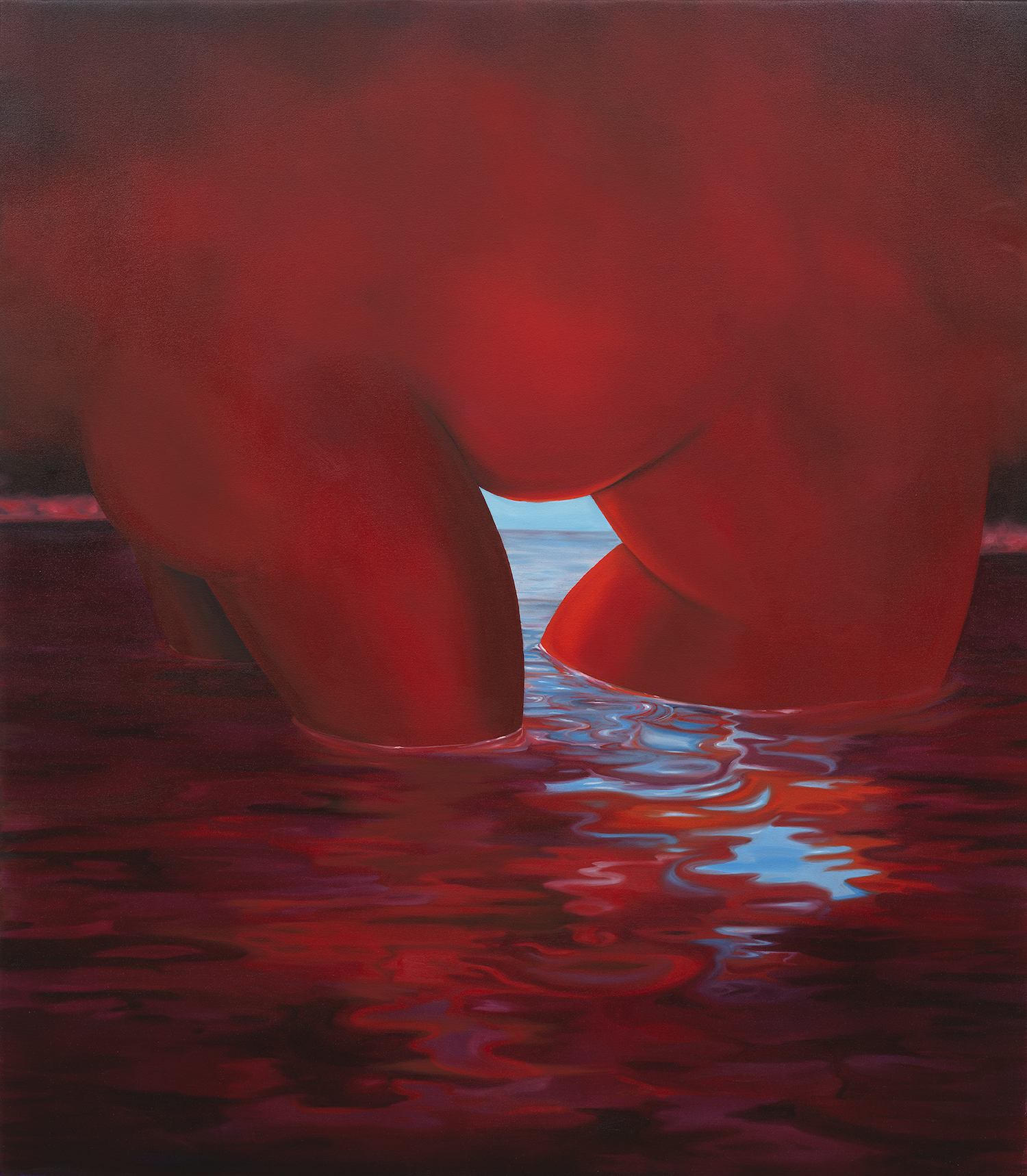
The bent back of Williams’ figures is integral, and for the artist it reveals a woman’s place in society, or at least in the stories Williams remembers being raised on. “I can see women emotionally, psychologically and physically being contorted in that way,” says the artist. “A woman bends to pick up her child, she bends in tiredness, in prayer, in love-making. I just think there’s something about this bent back that is really insightful about the woman’s experience.”
There’s a gracefulness to Williams’ figures, and she describes them as having a roundness and wholeness. Though they feel complete in body, they’re also faceless, which adds a sense of ambiguity. Their facelessness is partly because the artist sees these figures as objects or vessels, rather than real people. “I’m not interested in a singular subject or subjectivity, so there’s this desire for the body to behave more as a cup that can be filled,” says Williams. For the artist, the form of these vessels is informed by the experience, memories and trauma that she paints into them.
What surrounds the red, blazing figures has developed over the years. Initially they stood fairly unadorned, a blank space around them, but in the last couple of years Williams has become interested in the relationship between body and landscape. “When approaching these more emotional paintings, I started to think about being in a psychological state, but rather than talking about it as a state of mind, thinking of it as a place instead,” she explains. “So if we thought about trauma as a place, what would that place look like? What would be the terrain, the temperature, the geography?” The result is surrealist desert-like landscapes mixed with midnight blue night skies reminiscent of Georgia O’Keeffe, sometimes interspersed with lemons, a reference to Williams’ grandmother’s garden.
- Naomi and Ruth- Red Circle in a Red Frame, and Naomi and Ruth -No Beginning and No End 2019. Photo: Brittney Leeanne Williams
For Williams, each painting starts with a feeling, and with a questioning of that feeling. “Let’s say frustration, and then I’ll think a lot about how frustration would posture itself in the body, how it would take shape in a body,” she explains. From that headspace Williams sketches down ideas, thinking about composition, colour (red always comes first), the curling of the body and the edge of the paper. When she feels a deep connection is achieved between all of these elements, only then will she transfer and scale up to canvas. The layers of decisions and meticulous underpainting is why viewing one of Williams’ works can feel so rewarding: she has thought of every last detail.
Though she took to art easily, Williams’ navigation through the traditional art world has presented obstacles and challenges along the way. The biggest of these was having to drop out of The School of the Art Institute of Chicago in 2009, where she initially thought she’d be shaped into a “capital-A Artist”. “My family could not afford it, even with a merit scholarship. I had to drop out and that was the most catastrophic thing for me,” remembers Williams.
“But I do question, when I look back at me being an eighteen-year-old who comes from a lower income family, getting a merit scholarship to go to this school, like, who invited me into a conversation to ask ‘is this a smart move for you? Is this institution really going to be able to provide you what they’re promising?’. I’m not hating on art schools, I’m not hating on the art world, I’m just saying these things are very complex and I don’t know if we’re really inviting an eighteen-year-old into the realities of these things.”
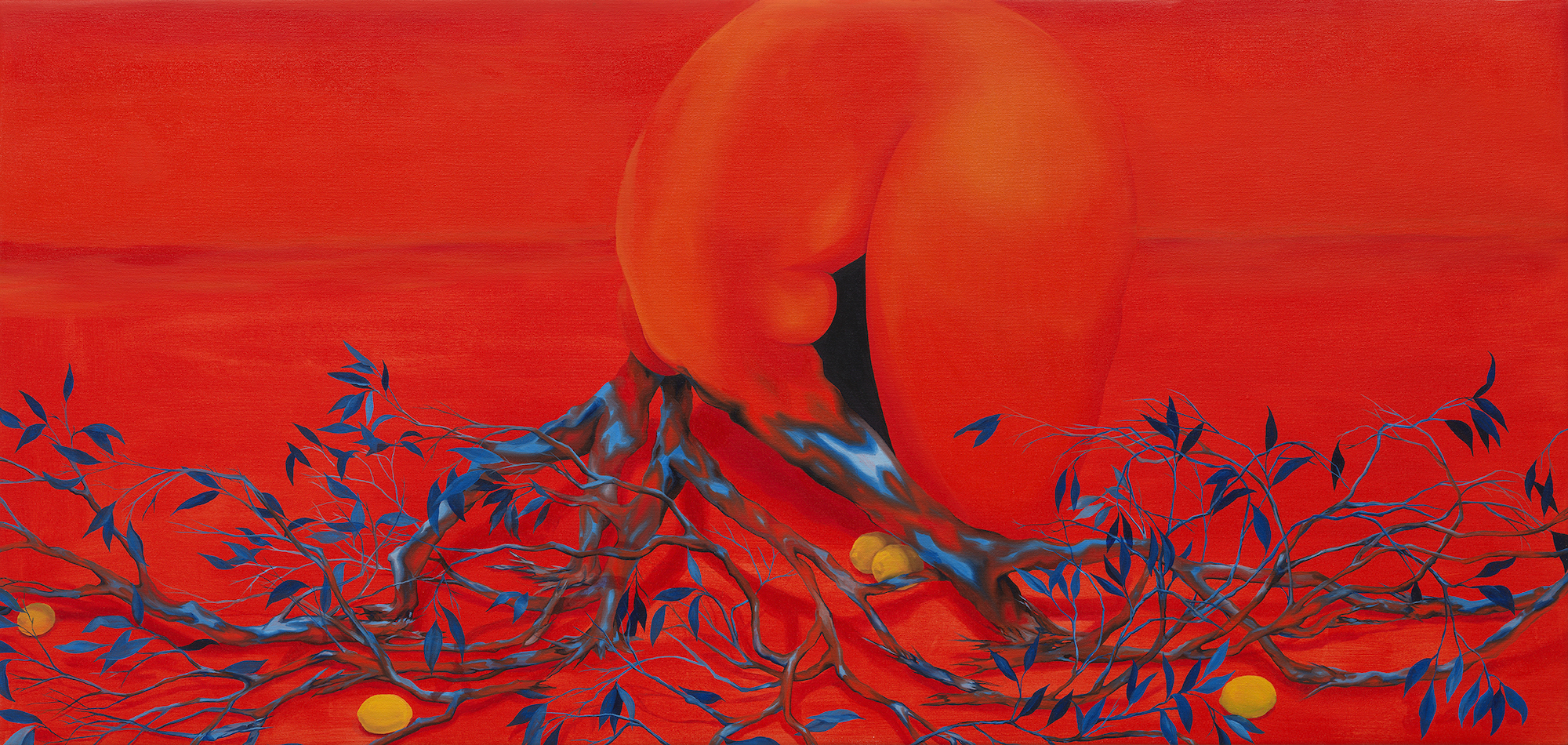
Williams’ role as an artist today is one sometimes flanked by guilt and duty. “I’m a kid who’s come from a very traumatic and complicated upbringing,” she explains. “I’m the daughter of a widow, I’m the daughter of a black man who was going to be directly affected by the Three Strikes law in California, I’m the sister of a brother who was recently pulled over by a cop just because of biases. I think those experiences come into what I think my responsibility is as a maker. At the exact same time, I don’t want to be an educator.”
““I trust that my work is not alienating, but I also trust that I’m not an interpreter”
She continues: “Am I supposed to be explicit and didactic for the sake of pushing for a new narrative? While also being this woman who wants to do this pleasurable thing, which is painting,” says Williams. “I definitely think as a woman, and a black woman, that’s in there too. At times I just want to be able to paint, and I should have that right. But we have soundtracks in our minds and they play when we don’t want them to, and when we do. So I think sometimes I’m listening to a soundtrack that I definitely don’t want to be listening to around what my responsibility is.”
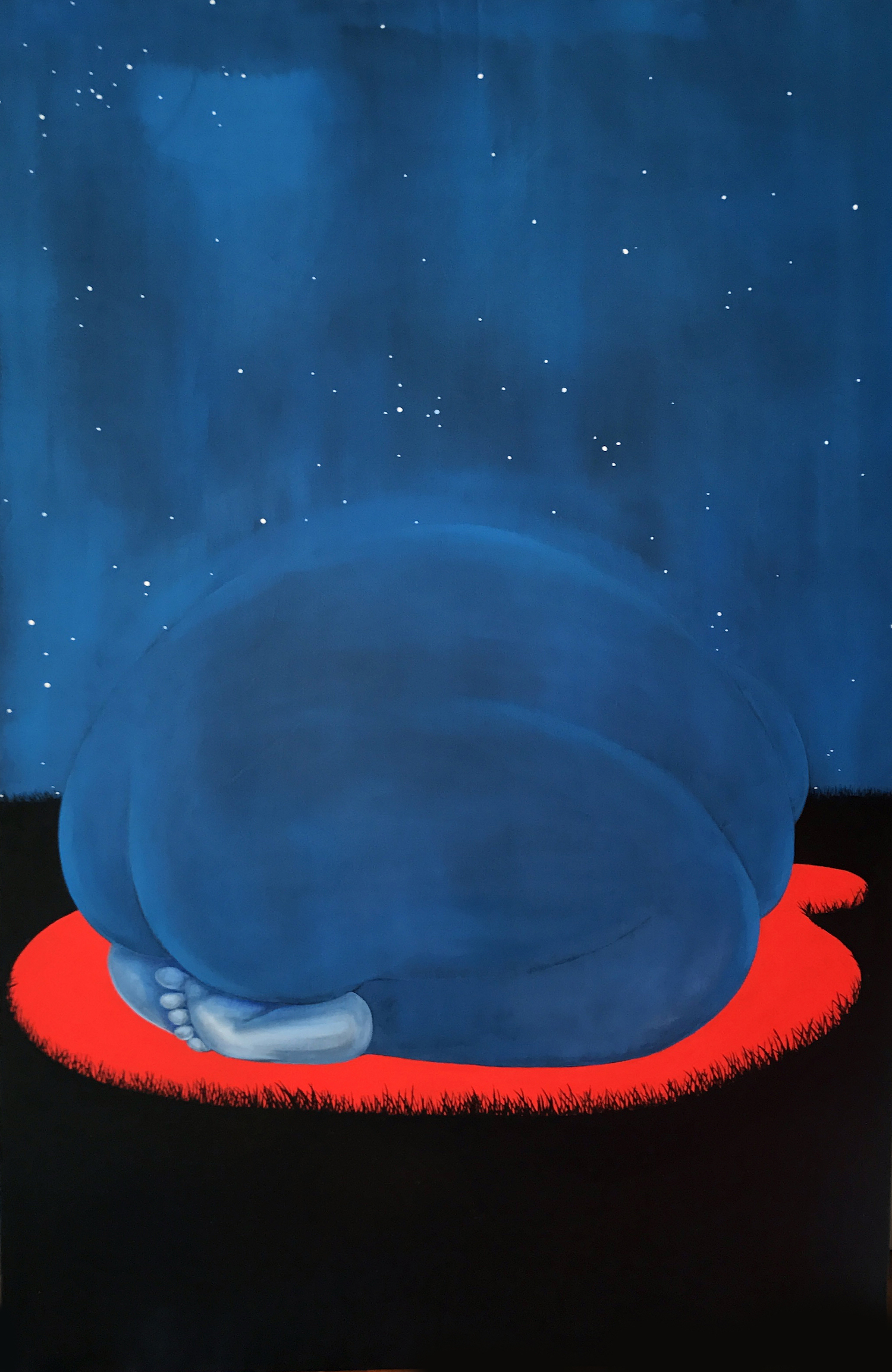
The paintings she’s been working on most recently are her most ambiguous, according to Williams, some of which will be on show in a group online exhibition called No Time Like The Present at London’s Public Gallery from 6 May. “I think that reveals that maybe I’m more comfortable today than I’ve ever been in just exploring my investigations, interests and curiosities,” she says. “Rather than answering to being an educator regarding my work.”
What’s helped Williams come to this realization is a diagram she’s created to help herself answer these big questions. “There’s a centre and there are these tiered rings that go out, almost like an orbit, and at the centre are my intentions,” explains the artist. “The rings that circulate outward are rings of intimacy or knowing. For me there are very few people who will circulate or orbit around my true intentions, but they’ll view the work and will be invited into the work in a way that someone who circulates in one of the outer rings won’t have.”
- Naomi and Ruth - Wrestle, Embrace, 2019 and Garden Bed, 2018. Photo: Brittney Leeanne Williams
Because of the strong symbolism in her work, Williams relishes the idea of her mother and a stranger standing in front of the same work of art and having completely different experiences. “My mother would look at a painting, and she would be carried to a specific time and place through symbolism. The work would speak to her on a very intimate level, it’s like a whisper,” she says. “The stranger, because they have an appreciation for the formal values and decisions I’ve made in the painting, are invited to look and have visual satisfaction, but there isn’t that doorway or private unlocking.”
Right now, Williams is clear that she isn’t creating work for the public. “I trust that my work is not alienating, but I also trust that I’m not an interpreter,” she says. “So I think this sort of orbit I’m talking about is my stance on my work and who I’m making it for—it’s definitely for me, though. Always me.”
